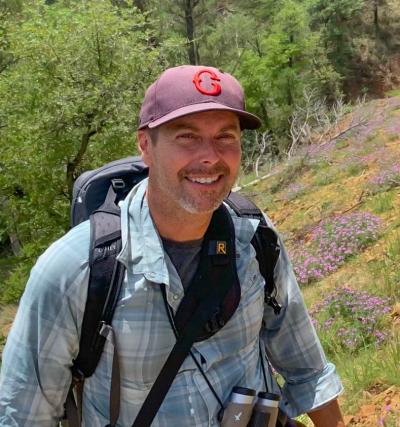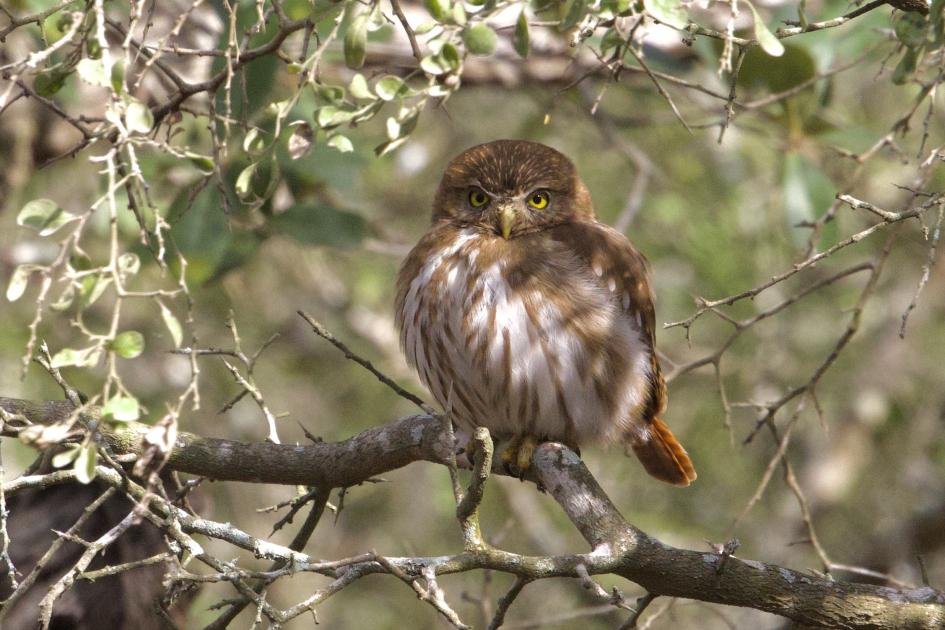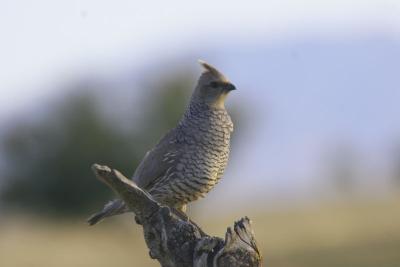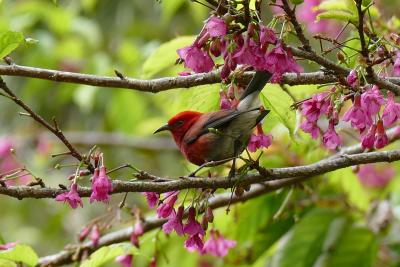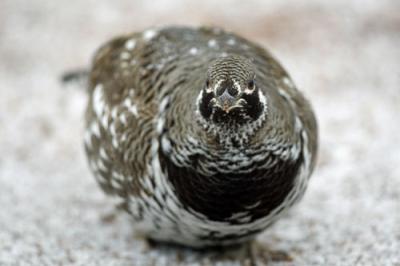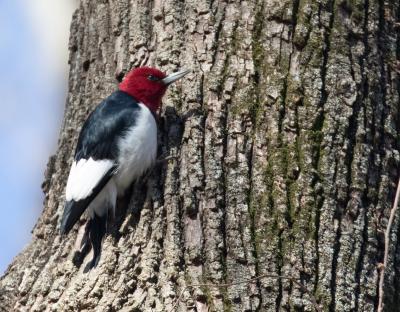Texas: The Rio Grande Valley in Winter
Including Whooping Cranes
-
Feb 9-18, 2026
Jake Mohlmann
-
Feb 8-17, 2027
Jake Mohlmann
2026
Single Room Supplement $730
2027
Tour Price to be Determined
2026
Single Room Supplement $730
2027
Tour Price to be Determined
At a time when much of the country is still firmly in winter’s embrace, South Texas offers a typically mild climate along with a notable abundance and diversity of both wintering and resident birds. We’ll visit famed spots such as South Padre Island, Santa Ana National Wildlife Refuge, Bentsen - Rio Grande Valley and Estero Llano Grande State Parks, Santa Margarita Ranch (if warranted), and the riverside below Falcon Dam, looking especially for birds whose range in the United States is largely restricted to South Texas. Winter is also a time when vagrants from Mexico appear, and our schedule is flexible enough to allow us to pursue any that are present.
Most of the world’s wild Whooping Cranes winter along a small stretch of the Texas coast. We’ll make a special boat trip to visit these magnificent creatures and connect with the many birds that use the rich central Texas coastline during the winter months.
Day 1: The tour begins with a 6:00 pm meeting in the lobby of our Harlingen motel. Night in Harlingen.
Days 2-3: We’ll spend two days exploring coastal sites at Brownsville, Boca Chica, and South Padre Island, as well as the central Lower Rio Grande Valley’s wonderful array of reserves possibly including Santa Ana National Wildlife Refuge, Bentsen - Rio Grande Valley State Park, Weslaco’s increasingly famous Frontera Audubon Society grounds, and the newly developed Estero Llano Grande State Park. We’ll look particularly for specialties such as Hook-billed Kite, White-tipped Dove, Common Pauraque, Buff-bellied Hummingbird, Couch’s Kingbird, Clay-colored Thrush, Tropical Parula, and Altamira Oriole, but we’ll also scrutinize the ever-present winter passerine flocks which may contain Blue-headed Vireo and warblers including Nashville, Black-throated Gray, and Yellow-throated. If any rare gulls are present we may visit the Brownsville city landfill, and we’ll scan the many wetlands along the boat channel for terns, herons, egrets, and shorebirds. Our schedule will be flexible and if major rarities are present, we’ll search for them. Nights in McAllen.
Days 4-5: After our final morning in the Lower Valley, we’ll travel inland and upriver to a more arid section of the Rio Grande Valley. Well-known riparian spots such as Chapeño, Salineño, and San Ignacio will occupy much of our time. If Santa Margarita Ranch, a restricted area, has multiple rarities, we’ll include it in our itinerary. We’ll focus on species such as Green and Ringed Kingfishers and Audubon’s and Hooded Orioles. In some years a few Muscovy Ducks, Red-billed Pigeons, or one of the rarer raptors such as Common Black-Hawk, Zone-tailed, or even Roadside Hawk may also be present, and we’ll make a special effort to locate the diminutive and often maddeningly hard-to-pin-down Morelet’s Seedeater. In the desert scrub of Falcon State Park, we may see Northern Bobwhite, Verdin, Cactus Wren, Black-throated Sparrow, and Lark Bunting, among many other species, and we’ll explore Falcon Lake where waterfowl can be abundant and Sprague’s Pipit sometimes hides in the grassy verges. Nights in Zapata.
Day 6: We’ll spend the morning upriver seeking any desert species or river specialties that we may have missed and then make our way back to Harlingen, with stops along the way as current ornithological possibilities dictate. In the late afternoon, we’ll return to Brownsville for the evening spectacle of parrots coming into roost. The parrot flock here is perhaps the largest in the valley, and it’s certainly the most diverse. We might see up to six species although only two are currently recognized as “established”. Night in Harlingen.
Day 7: We’ll drive to the coastal plain, where the flat grasslands support pairs of Aplomado Falcon, foraging Long-billed Curlew, singing Eastern Meadowlark, and soaring White-tailed Hawk. The shallow Laguna Madre supports large numbers of wintering waterfowl, including the largest concentration of Redhead in the world, and the woodlots and marshes of South Padre Island play host to rails, innumerable waders, and larids, and sometimes a surprise or two. After a bird-rich day along the coast and dinner at a beachside restaurant, we’ll return to Harlingen. Night in Harlingen.
Day 8: We’ll leave Harlingen, passing through the vast King and Kenedy Ranches on the way to Corpus Christi. We’ll stop at the King Ranch and have a local guide help us search for Ferruginous Pygmy-Owl in what is perhaps the best place to see it north of the Mexican border. We’ll stop frequently to bird the oak woodlands and mesquite grasslands where small ponds and farm fields harbor impressive numbers of waterfowl. Raptors should be common on the roadsides, and we’ll look especially for Harris’s and Ferruginous Hawks and Crested Caracara. Night in Corpus Christi.
Day 9: The bays and inlets around Corpus Christi and Aransas Pass support large numbers of wintering waterbirds. We’ll spend the morning on a boat exploring the back bays near Aransas National Wildlife Refuge. Whooping Crane is the main attraction, and we usually get good looks at several family groups. Along the way, we’ll keep an eye out for Roseate Spoonbill, Reddish Egret, and American Oystercatcher. In the afternoon we’ll visit Port Aransas and Mustang Island, where raptors are numerous and both Sedge Wren and Le Conte’s Sparrow lurk in the weeds. A peek at the Gulf of Mexico off Port Aransas may produce a Northern Gannet or an unusual gull. Night in Corpus Christi.
Day 10: The tour concludes this morning in Corpus Christi.
Note: The information presented below has been extracted from our formal General Information for this tour. It covers topics we feel potential registrants may wish to consider before booking space. The complete General Information for this tour will be sent to all tour registrants and of course supplemental information, if needed, is available from the WINGS office.
ENTERING THE UNITED STATES: Non-U.S. citizens will need a valid passport and may need a tourist visa or visa waiver. Consult your nearest U.S. Embassy or consulate for details. Canadian citizens should carry proof of citizenship in the form of a passport or birth certificate.
COUNTRY INFORMATION: There is no U.S. Department of State Country-Specific Travel Information for the USA. You can review foreign travel advice from the UK government here: https://www.gov.uk/foreign-travel-advice and travel advice and advisories from the Government of Canada here: https://travel.gc.ca/travelling/advisories. You can access the CIA World Factbook background notes on the United States here: https://www.cia.gov/the-world-factbook/countries/united-states/
PACE OF THE TOUR: We usually begin our day between 6:30 and 7:30 a.m. and return to the hotel usually between 5 and 6 p.m. On days when we’re looking for species such as parrots and rails, we’ll leave at dusk and may go directly to dinner without the usual break. Although we spend much time on foot, our walks are on flat terrain with numerous pauses.
The boat trip to see the Whooping Cranes is on protected inland waters and is rarely rough. Our craft for this trip also has bathrooms and an enclosed cabin with windows for those who do not want to sit on deck.
HEALTH: Texas presents no real hazards.
Smoking: We request that you do not smoke in the vehicles or when the group is gathered for meals, checklists, etc. If you are sharing a room with a non-smoker, please do not smoke in the room. If you smoke in the field, we ask that you do so well away and downwind from the group.
As it may be difficult to replenish supplies of personal medications, please anticipate your needs and bring an adequate supply.
Miscellaneous: The most common injuries result from spines penetrating the soles of tennis shoes. Virtually every desert plant is armed with thorns or spines and we recommend of at least ankle height as the best safeguard.
Sun: The sun can be intense—a broad-brimmed hat, proper clothing and strong sun screen lotion are essential.
Insects, Arachnids and Chiggers: South Texas has mosquitoes, ticks, and more troublesome still, chiggers. Although insects seldom present a problem in winter, we recommend using insect repellents with a high concentration of DEET. However, care must be taken to avoid getting the DEET repellent on optical equipment as DEET dissolves rubber and plastic and can damage coated lenses. Camping supply stores and outfitters carry some reasonably effective and natural alternatives, such as products containing permethrin 0.5%, that aren’t corrosive.
Fire ants are widely distributed and thoroughly noxious. The leaders will identify the ants at first encounter and remind you frequently to watch where you stand.
We actively look for rattlesnakes and feel lucky to see one. These fascinating reptiles are not a hazard but one always needs to use common sense when dealing with potentially dangerous wild creatures. Scorpions are mostly nocturnal and rarely seen, and the tarantulas occasionally seen on the highway are not dangerous.
CLIMATE: Mid-winter temperatures can vary from the low 40s F to the upper 80s or even low-90s. Temperatures will be a bit chillier on the water and there is always the possibility or rain and/or wind. We suggest bringing several layers of clothing, a rain jacket, and light gloves to be prepared for a variety of conditions.
ACCOMMODATIONS: We will be staying at standard, comfortable motels. WiFi is available throughout.
FOOD: Meals mostly taken in local restaurants are good U.S. standard with excellent Mexican fare and Gulf seafood. Breakfast will typically be at our lodging and lunches may be picnics depending on the day and the weather forecast.
WINGS tours are all-inclusive and no refunds can be issued for any missed tour meals.
Food Allergies / Requirements: We cannot guarantee that all food allergies can be accommodated at every destination. Participants with significant food allergies or special dietary requirements should bring appropriate foods with them for those times when their needs cannot be met. Announced meal times are always approximate depending on how the day unfolds. Participants who need to eat according to a fixed schedule should bring supplemental food. Please contact the WINGS office if you have any questions.
TRANSPORTATION: We will be traveling by leader-driven 12 or 15 passenger window van or minivan, depending on the group size. Participants should be willing and able to ride in any seat in tour vehicles.
2025 Narrative
South Texas thrilled us all during our week in this birding paradise. We encountered an impressive 186 species of birds in just over 1 week. Winter in this region is a great time to search for rare strays from Mexico. This year provided some of the rarest birds in the country including an unreal Mottled Owl experience at the Santa Margarita Ranch and an excellent encounter with a Cattle Tyrant. Rare local species were enjoyed, including Ferruginous Pygmy-Owl at King Ranch, and watching Aplomado Falcons hunt in the wind-swept coastal plains. We had a ball in Corpus Christi while watching adult Whooping Cranes teach their young how to hunt blue crabs at Aransas National Wildlife Refuge. The weather couldn’t be beat, the food was incredibly good, and the companionship of the group was perhaps the most exciting part.
Right off the bat, we knew we were going to have a good week with 5 Green Parakeets perched on the wires right outside the hotel to greet us for our intro meeting. First thing the next morning, we traveled southeast to the famed Resaca de la Palma State Park. Just before arriving we noticed a pale birding hovering over the fields that turned out to be a White-tailed kite showing us how to expertly maneuver the winds. It didn’t take long for us to hear and then see a male Tropical Parula right in the parking lot by the Visitor’s Center. Other valley specialties were utilizing this bountiful area, including terrestrial White-tipped Doves, bright Green Jays, and Altamira Orioles glowing in the morning light. We walked around the roads through the Tamaulipas thorn scrub picking up other birds such as Black-crested Titmouse and Ladder-backed Woodpecker. The warbler show continued with single Black-and-white, Wilson’s, and Black-throated Green. At the mud wallow, there were some Collared Peccary coming in to loaf in the already hot part of the day. A Long-billed Thrasher shot out of the undergrowth and scurried back and forth on the edge of the open area. We spent a lot of time here and it was well worth it. We then went over to UTRGV where Tropical Kingbirds allowed close approach giving us a chance us to study the finer details. Black-bellied Whistling Ducks were lazing on the shores of another resaca, this time containing water, and American White Pelicans and White Ibis were sharing the safety of the shoreline. We had a good study in differentiating Double-crested and Neotropic Cormorants here as well. Our warbler fest for the day continued as we tracked down a calling Yellow Warbler through the campus grounds. We were distracted by another warbler, this time a Yellow-throated, that came down right over our heads in a hanging tamarisk tree. While this was going on, we noticed a woodpecker shoot in that turned out to be a nice Yellow-bellied Sapsucker that we got to watch surveying it’s sappy holes.
The next morning we cruised through Progreso where flocks of thousands of blackbirds were littering the fields and skies. At the nearby granary silos, the droves of blackbirds were taking advantage of the spillage from the loading docks. The group sifted through the masses of nearly entirely male Red-winged Blackbirds to find both Brown-headed and the red-eyed Bronzed Cowbirds, as well at least half a dozen bright Yellow-headed Blackbirds of both sexes. Heading north we had our sights on Estero Llano Grande State Park and the suite of birds this place always has to offer. This park boasts a bird list of over 359 species in only 19 years of existence! An Indigo Bunting was seen as soon as exiting the van, as well as a pair of Curve-billed Thrashers adorning the power lines in the parking lot. The overlook at the Visitor’s Center provided great looks at Mottled Ducks, Blue-winged Teal with single Cinnamon Teal doing a decent job of trying to blend into the swirling mass of fowl. We had a good study of young and adult Yellow-crowned Night Herons at Alligator Lake, as well as a perfectly concealed Common Pauraque. Due to this species amazing camouflage, it took us a while to find this cryptic caprimulgiforme perfectly hidden in the leaf litter and may have failed without the help of one of the helpful volunteers who work here. Despite knowing where it was, it was still hard to re-find. Upon the dike overlooking the lake there was lots of activity. A trio of White-tailed Kites came in for a landing on a large tree, perhaps scouting out potential breeding sites. Little Blue and Great Blue Herons haunted the shallows, and a Tricolored Heron was entertaining as it ran around hunting small fish. A large group of Stilt Sandpipers probed in the mud, very close to a bunch of Long-billed Dowitchers doing the same. Some Roseate Spoonbills chased each other around trading places in the shallows. A group of American White Pelicans sat in a clump trying to psyche themselves up for a bout of feeding. American Avocets and Black-necked Stilts were walking methodically through the shallows. A young Red-shouldered hawk swooped in overhead, perching briefly on an exposed snag. On the way out, we stopped by one of the amazing volunteer’s RVs that had quite the feeder array. In a few minutes a sleek Hooded Oriole came in to strategically steal some sips of nectar tactically avoiding the larger territorial Altamira Orioles hogging the food source. The slow trickle of water attracted a valley specialty Clay-colored Thrush that appeared out of nowhere to have a quick bath. We waited long enough to get a few good views of a Buff-bellied Hummingbird with black-tipped red bill and rusty underparts. After a memorable lunch at a famous nearby taqueria, we looked in an area converted into homes, normally the opposite of what you want to see. Some birds don’t mind as was evident by the Burrowing Owl perched on a stack of cinder blocks slated for construction. A Northern Harrier hunted low over the uncut lots, and Eastern Meadowlarks sang their beautiful songs while posing within 10 meters of the group.
The next day we started out right after breakfast heading south towards the Mexican border. A few birds flew across in front of our van and alit on top of a leafless tree. These were Red-Crowned Amazons much to our delight. They revealed even more species of parrots sitting in the surrounding trees including nice Lilac-crowned and Red-lored Amazons. Soon we were at the gates to the famous Santa Ana National Wildlife Refuge. This piece of land protects over 2,000 acres of woodland and sits right in the middle of a major east/west and north/south migration corridor. The impoundments here were full of water, something that wasn’t the case for many of the places we visited during the week. As a result, waterfowl numbers and diversity were high. Least and Pied-billed Grebes swam in close proximity. One particular group of Least Grebes was hunkered together in the leeward side of a mesquite row resting out of the prevailing winds that were keeping us frigid this morning. Shorebirds were utilizing this harbor including at least 80 Black-necked Stilts, half as many Long-billed Dowitchers, and a single Spotted Sandpiper. Gadwall were loafing on the shore of some islands, as were diminutive Green-winged Teal. Ruddy Ducks were both active and asleep, both activities showing their stiff cocked tails the group is known for. A small cluster of Bufflehead seemed out of place in the shallow ponds, normally preferring deeper water to dive in for prey. Single Lesser Scaup and Ring-necked Duck spotted were the only individuals of those species we encountered over the week. A white flash low over the water disappeared into the low hanging branches on the perimeter. We were happy to meet up with a Belted Kingfisher, the most common kingfisher species of the trip. Vermilion Flycatchers were posted up on several trees, appearing like a flame on the ends of the branches. We kept flushing a confiding Loggerhead Shrike that would fly a few shrubs ahead of us, perching at chest-height for a close inspection. Groups of Least Sandpipers kept flushing in a similar fashion and would settle briefly before flying up ahead. On the muddy verges of the largest impoundment a Wilson’s Snipe was feeding on the verge, with plumage so cryptic it was only obvious when it was moving. At Willow Lakes a small water puddle was constricting a foraging group of shorebirds and waders that was impressive to see. Both Lesser and Greater Yellowlegs fed shoulder to shoulder allowing a study of the finer details separating the two. A couple White-faced Ibis joined the more numerous White Ibis ankle deep in the mud. One White Ibis grabbed a sizeable sunfish and had to work for over 10 minutes trying to get the critter down its throat, all while outrunning its competitors vying for a chance to consume the large meal. After tallying our 61st species here, we were famished and headed to some of the famed Texas barbeque we’d been hearing about. After our culinary adventure, we made our way to Zapata to get ready for our evening adventure. As the shadows were getting long, we headed over to Santa Margarita Ranch in hopes of witnessing one of the super-rare birds being recorded here at nighttime. We began trekking down towards the banks of the Rio Grande River. Common Pauraques ‘reeer’ calls were scattered over the landscape, and a couple McCall’s Screech-Owl’s trills rang softly as we walked through the misty night. Precipitation started lightly falling and we were wondering our likelihood at seeing night birds given the wet conditions. Then all of a sudden out of the darkness came some low hoots, and instantly we knew this was the Mottled Owl we were keeping our fingers crossed for. We sat motionless while the prized owl made its way towards us through the riparian forest from its original location across the river in Mexico. Our guide’s night vision monocular eventually revealed the location of this amazing bird, and quickly it was lit up in the soft glow of the spot light for us to snap some pics and take in this amazing beast. This is a long-staying third USA record, and the first Mottled Owl that was actually chaseable, giving us a thrill we’ll never forget.
The next morning, we worked our way back down to the bountiful forests below Falcon Dam. Soon we arrived at the boat launch at Salineno, giving great visibility up and downstream at water level. Immediately upon exiting the van the machine-gun rattle of a Ringed Kingfisher rang through the river valley. One then appeared flying upriver and eventually coming back to perch in a tree very close to us overhead. Cormorants of both species were streaming by in small flocks, as well as singles of Laughing Gulls and Caspian Terns. Large flocks of American White Pelicans slowly sauntered by with slow wing beats. The surrounding snags were adorned with mostly Osprey, though we were able to get the scope on a couple Gray Hawks perched on the hillsides. We strolled up a 2-track and stood on the bank near a stand of giant reeds. After about 20 minutes a tiny pale bird came flying in from the island nearby. In view was a small Green Kingfisher that sat quietly just a few feet above the water’s surface. Once it successfully splashed down for a shiny minnow, it flew upriver as fast as it appeared. The arrangement here at the famous Dewind’s feeders never disappoints as numerous specialties stock up on food for leaner times, or perhaps just to be gluttons. Seriously good views of Golden-fronted Woodpecker, Black-crested Titmouse, and the streaky Long-billed Thrasher all graced our lenses mere meters away. Also here we obtained point blank views of not only Olive Sparrow, but several Black-throated Sparrows that jumped back and forth from a stately prickly pear cactus. We drove down Chapeno Road where a flock of Lark Sparrows posed long enough for us to enjoy their clown-like facial patterns. Flocks of Western Meadowlarks were feeding in the short grasses alongside the roadway, as well as a pair of Greater Roadrunners hunting the edges of the forest. Bewick’s Wrens were working the trunks of the mesquite trees, slowly poking into the crevices of the furrowed bark. Our path then led us to a County Park full of wintering ‘snowbirds’ from all over the continent. We thought this may hamper our bird luck, but the opposite turned out to be true. One of the RVs had a bird feeder stuck on the back that was attracting a bunch of Northern Cardinals and Pyrrhuloxias for comparative views, as well as adding several Chipping Sparrows and surprise Clay-colored Sparrow to the mix. Next on the list of places to visit was Falcon State Park. Just after entering the park a perched Harris’s Hawk sat at length for a nice study of the rusty shoulders and overall dark plumage. The dense Chihuahuan thorn scrub here can host some unique species for our list. The most exciting of these was a covey of Northern Bobwhite that were slowly working through the butterfly garden ultimately crossing right in front of the van. We heard some information that a Morelet’s Seedeater had been spotted at the Chapeno boat launch so we shot back over there to search for this rarity. Unfortunately, we could not turn it up, however, we did have amazing views of another valley specialty in the form of Audubon’s Oriole. The bright yellow oriole with black hood whistled its sweet melodious song from the tops of the tallest trees.
The following day we had access to the Santa Margarita Ranch, which had been reporting some ridiculously rare and amazing birds over the last few weeks. We had our fingers crossed the birds would still be there for our chance to see some of these highly sought after creatures. We left Zapata in the dark and met our guide for the day at the border wall, recently constructed on this private ranch abutting the Rio Grande River. One thing that makes this ranch special is its bluffs. These high hills are hard to come by in this part of Texas. They allowed a stunning view up and downriver, as well as far into Mexico and the mountains to the south. Immediately birds started streaming by including even more cormorants and pelicans. A pair of Ringed Kingfishers flew by downriver, hovering like a helicopter over the gently flowing water eyeing anything that could be considered food. The bluffs here sit atop some sizeable wash banks, one of which hosts a breeding pair of these magnificent birds, USA’s largest kingfisher. On the main island just upstream ducks were resting in small groups including Blue-winged Teal, American Wigeon, and Northern Pintails. Below the nearest bank a pair of Wood Ducks were spotted, a new bird species for this tour. Across the river we spotted an all-dark hawk camouflaged nicely amongst the bark of the towering trees. It eventually moved perches and we were able to confirm the identification as Zone-tailed Hawk. While scanning distant treetops our local guide called out some dark objects sitting close together that turned out to be a group of Red-billed Pigeons. These birds sat long enough that we had time to note all their features, including their mostly white and slightly red bills. After a few hours of viewing from the bluffs, we headed down to the riparian vegetation we’d been overlooking in hopes of finding some of the other rarities that had been being reported here. After we passed through two locked gates we parked and began walking along the 2-track. About 5 minutes later as we approached the feeding area where a loud shriek came out from the forest. Instantly, a Brown Jay materialized out of nowhere and was soon joined by a couple more. This huge jay used to be much easier to see in the USA, but this ranch is now the only reliable, publicly accessible place to run into them on this side of the border. Our local guides expertly placed loads of citrus, peanut butter, marshmallows, and other sundry things out on the branches in hopes that the birds would find some interest. It didn’t take long for a pair of bright yellow and black Audubon’s Orioles to come in to investigate the buffet, joined by a kaleidoscope of colors in the form of Altamira Orioles, Green Jays, and Northern Cardinals. We strolled along the banks of the river here and came very close to another Green Kingfisher perched just below our feet. Just after this, we met back up with the group of Red-billed Pigeons and this time some of us got to study them from below. In some foraging flocks of birds here we also added Blue-headed Vireo and Nashville Warbler to our growing list. On the way out we checked near some of the ranch houses where eventually a small flock of Scaled Quail came walking out of the dense cactus-laden understory. While observing these ‘cottontops’ a medium-sized bird shot across the road and landed in the middle of a mesquite. We enjoyed watching this Ash-throated Flycatcher while it hunted from its perches catching unsuspecting insects from the ground nearby. We took time to track down a couple Black-tailed Gnatcatchers as well. Ridiculously good looks were had at a territorial male, replete with black cap and raspy vocalizations diagnostic to this species. After taking in the final parts of the ranch, we made our way back east to Harlingen to get ready for our next adventure.
The next morning we headed out towards the coastal plains in search of birds that utilize this wind-swept habitat. Near Old Port Isabel Road, we quickly spotted a heard of ungulates grazing a few hundred yards away that turned out to be Nialgai, a large Asian antelope introduced in the 1920’s originally for hunting purposes, but has since expanded its range across the southern portion of Texas. A small roadside pool here had some stunning Redheads in perfect light with top halves glowing. Turkey Vultures were topping the wooden posts and were gathering at one spot in an open field, undoubtedly feeding on a recently deceased cow. Northern Harriers were using the windy conditions to their benefit as they coursed low over the grasslands. Another raptor used to these high winds is White-tailed Hawk. At one point we had three of these stunning raptors together, wheeling through the sky in an amazing aerial display. Some heads bobbing through the grass turned out to be Long-billed Curlews, our largest shorebird. These birds showed how although they are designed to probe deep into the mud for invertebrates, they are just as comfortable feeding in dry lands for various prey such as grasshoppers, spiders, and beetles. It was also great to see Eastern Meadowlarks in good numbers regularly perched alongside the road or flying away in small flocks. We checked some mudflats on South Padre Island where orange-billed Royal, red-billed Caspian, and black-billed Forster’s Terns all huddled together on the edge of Laguna Madre. A sizeable flock of American Skimmers was nice to practically walk right up to, allowing inspections of the odd-shaped bill this bird utilizes for hunting just above the water. Dunlin numbers reached one hundred, closely followed by impressive numbers of Sanderling. A group of Short-billed Dowitchers huddled together with some feeding bouts for a good lesson in dowitcher ID. Interspersed with a handful of Willets were many Black-bellied Plovers, similar in size but having a completely different foraging behavior and bill shape. A single rusty Marbled Godwit was a treat and lifer for some, as we watched it probe along with its slightly upturned bill. We were fortunate to have both light and dark morph Reddish Egrets in close succession. A white-morph bird allowed extremely close views. We were able to drive the van right up next to it and have looks at the antics that make either color of this species recognizable. After some of the best seafood in South Texas we left the island and checked another spot where San Martin Lake flows into the Brownsville Ship Channel. The tide was perfect, and as a result there were scads of shorebirds, gulls, and terns present. Black-necked Stilts were the most numerous, and were unsuccessful in hiding the slightly larger American Avocets mixed within. A pair of American Oystercatchers sat close by, giving inspection of their large orange bills and dark and white plumages. A large group of Marbled Godwits sat shoulder to shoulder hunkering out of the wind and even more stately Long-billed Curlews slowly strode across the flats. Among the 350 Laughing gulls we were able to pick out a much larger American Herring Hull in the mix. The terns were well-represented with large groups of Forster’s and Royal, and even a few Gull-billed Terns with oversized bills and all white plumages. From here, we ventured to an area known to host Aplomado Falcons. Our luck was with us as we pulled up to one of the hack towers strategically placed for these birds to use for nest sites. A pair of these masters of the plains were perched right on the tower, giving us a chance to pick out the larger female next to the slimmer male. It’s great to see this species thriving in its native habitat, after at one point being completely extirpated from Texas. This afternoon we headed back to Brownsville in order to try our luck with Oliveira Park in hopes of seeing the magic that is its famed parrot roost. Minutes after we pulled up White-fronted Amazons started flying in staging on the surrounding power lines. Birds met up in couples as if exchanging information on where the best foods were for tomorrow's forage. Shortly thereafter other species started dropping from the sky and came to roost in a well-lit oak tree, including 150 Red-Crowned and a single Yellow-headed Amazon. It was quite a sight to see this many parrots swirling overhead as the sun was setting. We put them to bed in some huge eucalyptus trees and went to sample another delicious meal.
The following morning, we left Harlingen early and headed north for about an hour to the King Ranch. Unfortunately, on the way we couldn’t pull over for the large flock of Snow Geese we saw at a ranch pond, the only ones encountered on the trip. The King Ranch is the largest in the United States and has four distinct divisions. We set out with our local guide to explore the Norias division, and area that sees only about 10% of all visitors to the ranch, and the best overall for birding. It didn’t take long to find our main quarry of the morning perched amongst the towering oak tree forest this land protects. We pulled up to an area where our ranch guide scanned with a thermal camera. In no time she was able to spot a Ferruginous Pygmy-Owl that was sitting perfectly still in the middle of a thorny shrub at eye level. This is perhaps the best place to see this owl in the United States where hundreds of them have been found to nest. Finding this bird so fast allowed us time to drive through a lot of other roads and habitat of the ranch. We seemed to constantly be pushing Rio Grande Wild Turkeys off the road to the sides. Numerous Greater Roadrunners were doing the same, swiftly getting out of the way of the van. A single Sprague’s Pipit fly away as it flushed from the middle of the 2-track, but despite our best efforts could not re-find this grassland hermit. An unbelievable amount of American Kestrels were seen throughout the day, with a total of 19 counted for the excursion. Harris’s Hawks were regularly encountered and definitely turned into one of the highlights of our visit here. Vesper Sparrows were numerous and allowed time for us to study before flying off too far, and a bunch of Vermilion Flycatchers were enjoyed as they sat the scattered mesquite trees. Our lunch spot was in the cool shade of an oak grove and as luck would have it, a Great Horned Owl had the same idea. This huge owl allowed some inspection before eventually flying to a quieter place. Our only Eastern Bluebird also joined us for lunch, a familiar sight to those of us from the east. Just before leaving, we took time to corral a flock of Savannah Sparrows as we watched them feed on seeds at the edge of the parking lot. After our amazing day we headed up to Corpus Christi for the next leg of our journey. When we arrived to the city, we took time to track down the continuing Cattle Tyrant, a wayward bird of origins unknown that showed up here last year. It’s tough to say whether it was of wild provenance, however it certainly was acting like every other Cattle Tyrant I’ve seen in the world.
The following morning, we headed to Rockport to catch our boat for the day trip through Aransas National Wildlife Refuge. Aransas National Wildlife Refuge is the wintering grounds for about 3/5 of the entire population of Whooping Cranes in the world. The weather finally turned on us and brought with it lots of rain and some wind. Lucky for us water birds don’t really care about either. As we motored across Aransas Bay rafts several Common Loons allowed close approach before diving into the depths and out of view. Pushing through the inclement weather were a couple of Barn Swallows, early arrivals making their way north to their breeding grounds. As we hit the tip of the refuge, we noticed dozens of stick nests perfectly placed in the stunted trees. We proceeded to count over 50 Great Blue Herons who were getting ready to utilize these to begin the nesting process in the coming weeks. We hopped onto the Intracoastal Waterway, which follows the coastline from the southern tip of Texas all the way up to Massachusetts. The boat slowly crept by various oyster beds and sandy islands filled with coastal birds like resting American Oystercatchers, Ruddy Turnstones, and several “Western” Willets. There were also groups of cormorants with both Neotropic and Double-crested sitting side by side, giving us great comparative looks. Soon after hitting the waterway, it wasn’t long until we caught a glimpse of our first family group of Whooping Cranes foraging in the tides. Typically, these birds stay in small groups of 2 adults and 1 or 2 young as they constantly look for food, including the blue crab, a staple food on its wintering grounds. Over the next couple hours we saw at least 10 of these endangered species, sometimes at very close range from our boat. Brown Pelicans were a constant presence during the boat trip, diving from high up on unsuspecting fish, with lesser numbers of American White Pelicans feeding in small groups in the shallow pools of the refuge. It was nice to see the differences in feeding styles of these 2 species that look similar, but feed completely differently. At one of the shallow ponds on the refuge, we spotted an adult dark-backed Lesser Black-backed Gull that stood out like a sore thumb all by itself. These gulls used to be pretty rare, not that long ago, but have increased their numbers in recent years quite a bit. After we had our fill of Whooping Cranes we returned back across Aransas Bay to Fulton where we had a delicious seafood lunch. The weather was starting to get worse, but we pushed on to find more species that were weathering the storm. We made our way over to Mustang Island and the Leonabelle Turnbull Birding Center. This location provides a resting spot for tons of birds, and a unique perspective from above with which to view them. A plethora of Long-billed Dowitchers huddled together for warmth in the drizzly conditions, as did a group of Black-necked Stilts. Droves of Green-winged Teal sought refuge on the shores, as well as flocks of Northern Shovelers. Common Gallinules walked around the water’s edge, and White Pelicans gave us a good show as they flapped their huge wings as they bathed. One of the Soras here emerged from the marsh and walked out below our feet, a unique perspective of this marsh bird. Among the common Ring-billed Gulls our only Bonaparte’s Gull of the trip landed briefly for a brackish dip in the water. As we made our way south along the island, we had our eyes set on another area for the Aplomado Falcon. Not only did we find one, but we were elated to find 3! We watched a pair of these falcons at another nesting platform. The female sat on the structure watching the male, who was successfully hunting for prey it would bring back to the platform and consume in close company to its mate. After our amazing day we enjoyed our final Thai dinner and chatted about the trip we’d just experienced. This was truly an unbelievable week of birding in South Texas. The long list of Lower Rio Grande specialties was immense, and we even had a few really rare birds to throw into the mix. This area proved once again why so many people take a break from the winter doldrums to experience this special place in the winter months.
Jake is the most wonderful, terrific, and fantastic bird guide. As always, he made sure we were all comfortable, safe, and seeing the birds we wanted. Jake makes seeing birds fun.
- Peggy C. on Texas: The Rio Grande Valley in Winter
Our tour was excellent. Jake was a wonderful guide, intrepid and dedicated to seeing the special birds of the Lower Rio Grande. He was also a great teacher, very patient with questions about the birds, and patient too in explaining the daily itinerary and why we were there. I was more than amazed at his knowledge of the birds and the area. His kindness, caring and good spirits kept me going even when the weather was not cooperating.
- Jeannette M. on Texas: The Rio Grande Valley in Winter
Maximum group size seven with one leader.









































